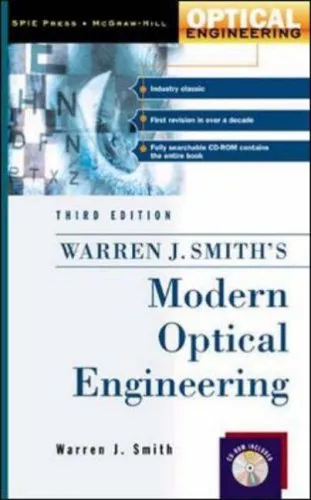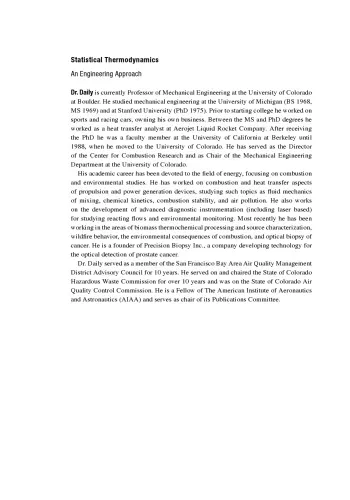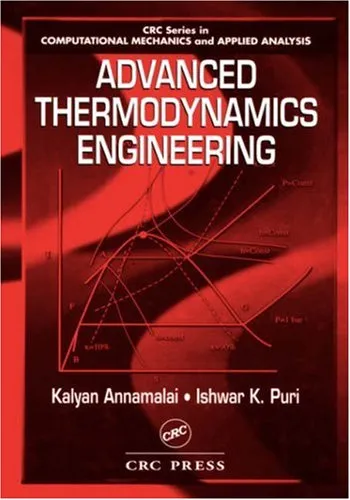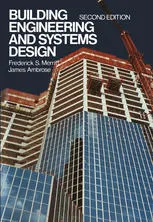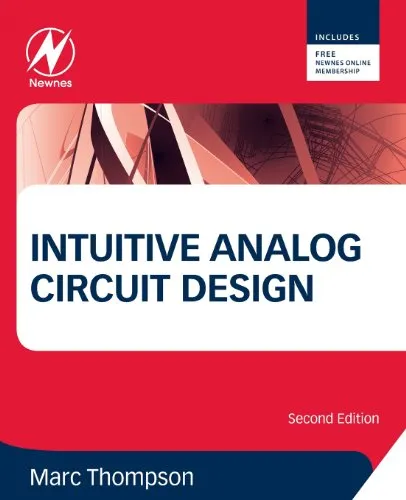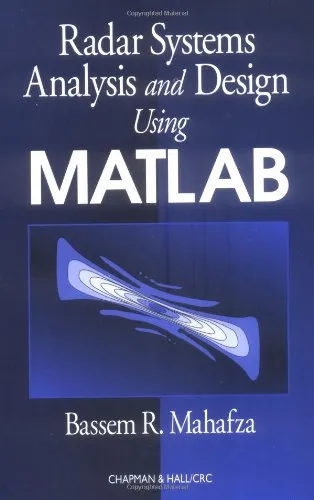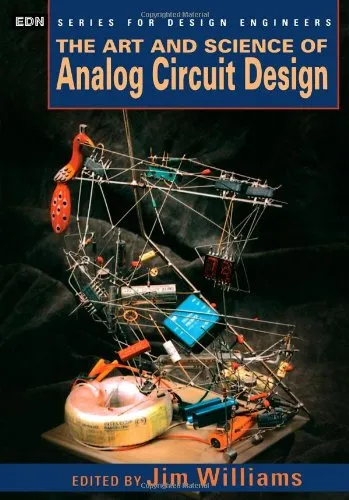Modern optical engineering: the design of optical systems
4.6
Reviews from our users

You Can Ask your questions from this book's AI after Login
Each download or ask from book AI costs 2 points. To earn more free points, please visit the Points Guide Page and complete some valuable actions.Related Refrences:
Introduction to "Modern Optical Engineering: The Design of Optical Systems"
Welcome to the world of optics! Written by Warren J. Smith, Modern Optical Engineering: The Design of Optical Systems is a seminal text that has been guiding and inspiring optical engineers, scientists, and students for decades. Recognized globally for its comprehensive approach to optical system design, this book serves as both an authoritative reference and an educational resource to deepen your understanding of optical engineering principles.
In this introduction, we will explore the core essence of what makes this book a must-read. Whether you are delving into optical concepts for the first time or are a seasoned professional revisiting the fundamentals, Modern Optical Engineering stands as a cornerstone in the study of lenses, mirrors, imaging systems, and beyond.
Detailed Summary of the Book
The book dives deep into the science of light and optical systems, providing readers with an in-depth understanding of the tools and techniques used in optical engineering.
The content is structured to gradually build knowledge, starting with the basics of geometrical optics and optical physics before advancing into the specifics of systems design. Topics covered include:
- The fundamentals of light behavior and wave optics.
- The design and analysis of lens systems, including aberration corrections.
- The application of mirrors and combined optical systems.
- Techniques for analyzing imaging and illumination systems.
- Mathematical tools and computer-based approaches in optical design.
- Insights into manufacturing considerations for optics.
One of the book's most valuable aspects lies in its practicality. It bridges theoretical principles with real-world applications, emphasizing how to design and optimize optical systems that meet specific engineering requirements. Additionally, each chapter is filled with worked examples, diagrams, and problem sets that encourage hands-on learning and reinforce key concepts.
Key Takeaways
- A deep understanding of foundational optics: The book provides essential knowledge that forms the building blocks of optical engineering, focusing on both theory and application.
- Critical problem-solving skills: Learn how to analyze and solve complex optical system issues using systematic methods and real-world examples.
- Comprehensive coverage of optical design: From single lenses to advanced multi-element systems, the book explores a wide range of topics that cater to various interests and domains within optical engineering.
- Application-driven insights: With a clear focus on practical implementation, the book prepares readers to apply their knowledge in industries such as photography, astronomy, telecommunications, and medical imaging.
- An enduring reference: The rich content and timeless insights make this book a go-to resource for professionals and students alike.
Famous Quotes from the Book
"Optical engineering is the art of finding the optimum balance between competing design requirements."
"An engineer's most valuable skill is not just in solving problems, but in asking the right questions."
"Understanding aberrations is the first step toward mastering optical design."
Why This Book Matters
Optics is an integral part of modern technology, and its influence can be found in diverse fields such as healthcare, space exploration, and consumer electronics. Modern Optical Engineering stands out as a definitive guide in this domain for multiple reasons:
- Accessible yet scholarly: This book strikes the perfect balance between academic rigor and practical accessibility, making it suitable for a broad audience.
- A gold standard in optical textbooks: It has been relied upon by students, professors, and practicing engineers for decades, maintaining its relevance across evolving technologies.
- Promotes innovation: The comprehensive, in-depth material serves as a springboard for new ideas and innovations in optics, encouraging readers to push the boundaries of what’s possible.
- Timeless resource: While technologies may change, the fundamental principles of optical engineering remain constant—principles that this book explains with unmatched clarity and depth.
In summary, this book is more than just a textbook—it’s a professional companion, a roadmap, and an inspiration for anyone passionate about optics and optical engineering. If you are serious about mastering the art and science of optical system design, Modern Optical Engineering is an indispensable addition to your library.
Free Direct Download
You Can Download this book after Login
Accessing books through legal platforms and public libraries not only supports the rights of authors and publishers but also contributes to the sustainability of reading culture. Before downloading, please take a moment to consider these options.
Find this book on other platforms:
WorldCat helps you find books in libraries worldwide.
See ratings, reviews, and discussions on Goodreads.
Find and buy rare or used books on AbeBooks.
1334
بازدید4.6
امتیاز0
نظر98%
رضایتReviews:
4.6
Based on 0 users review
Questions & Answers
Ask questions about this book or help others by answering
No questions yet. Be the first to ask!
